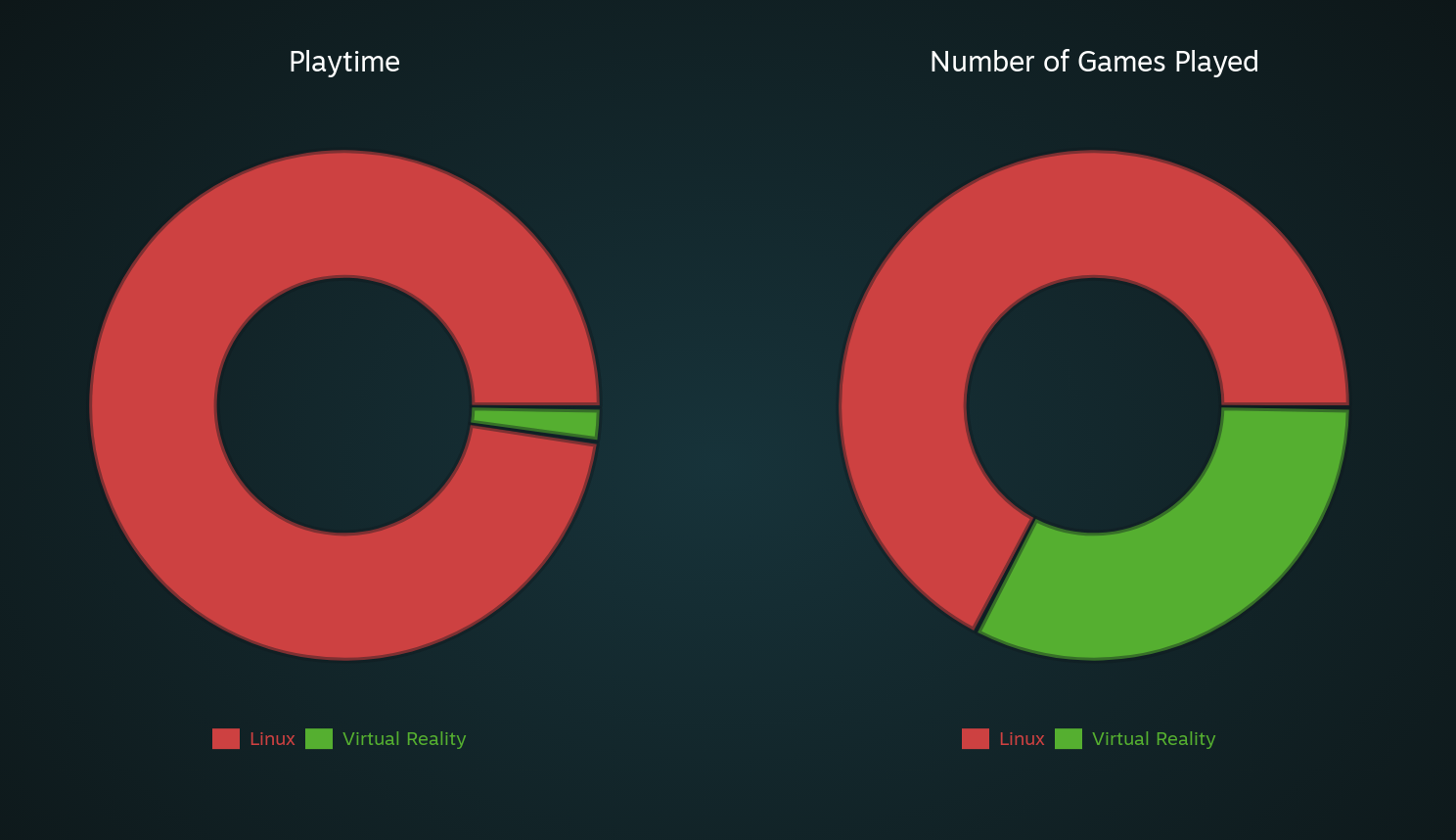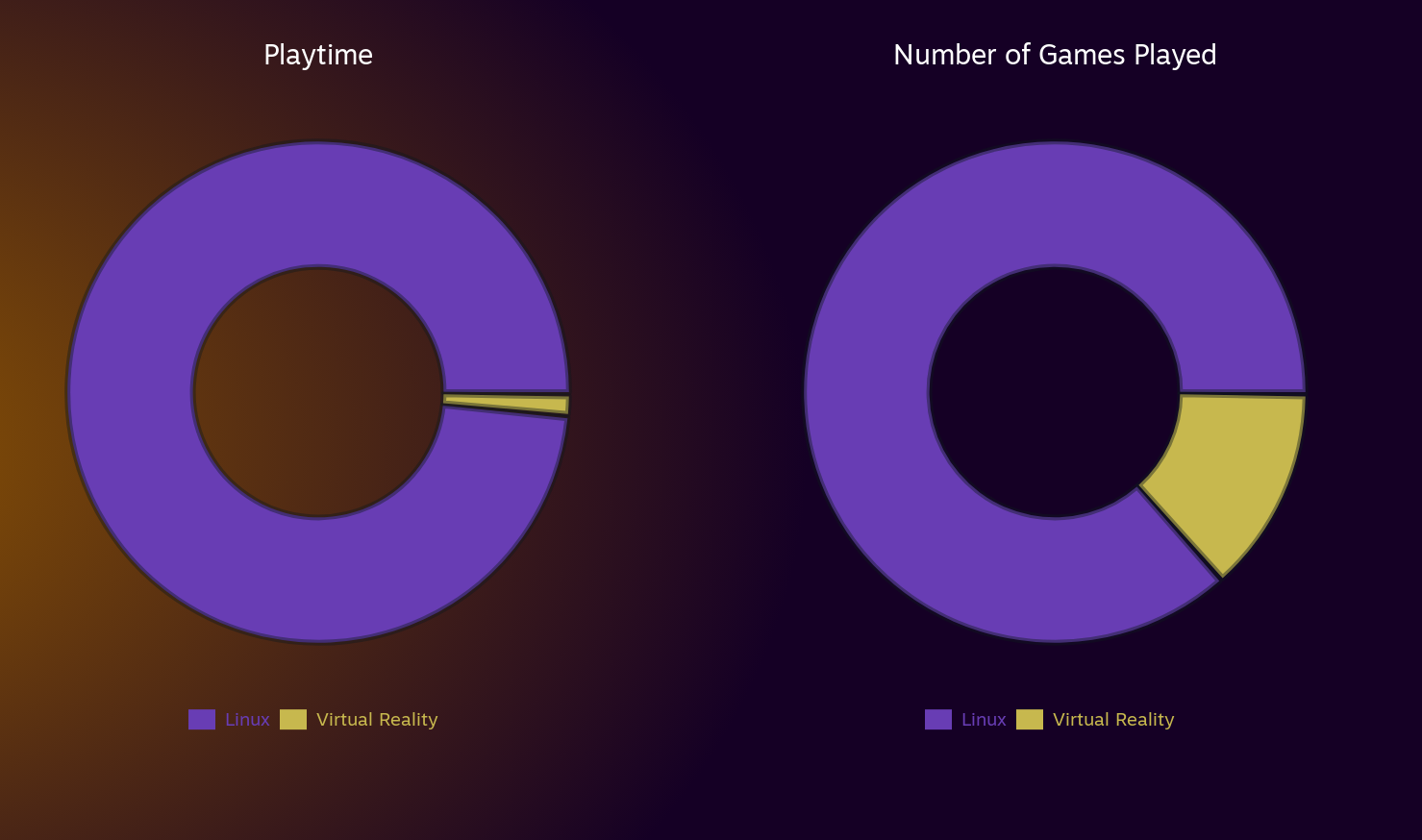Had no Problems with that in FF14, Remnant 2, Satisfactory, Supermarket Together and Subnautica Below Zero. Tested them all under Sway, not sure how much that influences these results.
- 0 Posts
- 15 Comments
From my experience using it: Mostly steam overlay and clipboard copy/paste not working. The rest seems fine.

 8·4 months ago
8·4 months agoI wish. Sadly the google play store requires monotonically increasing build numbers, so any option of resetting build numbers after major releases goes out the window.

 8·4 months ago
8·4 months agoMost of the stuff on GoG should fit the bill. You still can use it as a website to shop for a game and get a installer exe for it. Without any additional launcher.
As far as documented network go, I’ve never seen more than games listing a couple of ports for servers, never anything like ips or actual network protocol descriptions. I guess anything with user hostable dedicated servers should be fine.
Problem is that those old games have very low online population, so I’m not entirely sure how much “casual comraderie” you’ll find.

 3·5 months ago
3·5 months agoThat’s an interesting approach. The Traditional way would be to go by game score like the AI Mario Projects. But I can see the value in prioritizing Bullet Avoidance over pure score.
Does your training Environment Model that shooting at enemies (eventually) makes them stop spitting out bullets? I also would assume that total survival time is a part of the score, otherwise the Boss would just be a loosing game score wise.

 3·5 months ago
3·5 months agoNormal business users are fine if the Company hasn’t deep-throated Microsoft. Our Company does all the business work with no windows machine in the whole company.
Being locked-in on Microsoft Office is a thing and not the fault of linux

 72·8 months ago
72·8 months agoBringing more modern tools and features to existing large code bases is “destroying his reputation”? Bjarne and the committee is constantly extending and modernizing a language with code bases older than me. Yes that means the old stuff has to be kept around but that is the price of allowing existing code to migrate gracefully instead of just throwing it out of the window. There is a problem with some missing rails to enforce current and saver techniques but Bjarne is not denying that.

 21·8 months ago
21·8 months agoThat is the mindset that gives us text editors using 100% cpu to blink a cursor because their css triggers a bug in the web browser they ship to render the text editor.
You can be memory save without shipping a whole browser, but disregarding power and memory efficiency will just make performance gained by hardware evaporate in overhead.

 3·9 months ago
3·9 months agoThis also works the other way round:
The best programmers won’t be able to fix you clunky mess of bureaucracy by making it digital.
You can run steam games on the quest (without link)? I thought it was locked to the occulus store.
Still a bit irritated by defining VR as a platform on the same level as Linux or Windows, but whatever.



 36·11 months ago
36·11 months ago“But throughout that time, I actually had no inkling what game development was actually like. How hard the designers, programmers, artists, producers, and everyone else worked,” he says. “The struggle to bring a vision to life with constantly shifting resources. The stress.”
Then tell us about it. Make it heard where you get Stressed and where you rub up on the state of the art. List off what had to be finished in crunch time. What got pushed by Marketing or Management. Leaving everything up to a nebulous “you don’t know” makes any criticism easily dismissed and reduces leverage against systemic issues.
how do you stop it on client side? I’m not sure if it has been deployed into the wild but these days computer vision is good enough to just work off the images. Capture image signal, fake usb mouse outputting movements calculated from image data. If this isn’t already available it’s only held back by the need for extra hardware.

I use wine-tkg (https://github.com/Frogging-Family/wine-tkg-git)